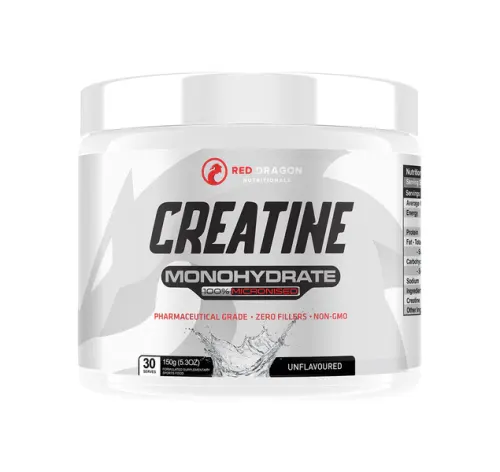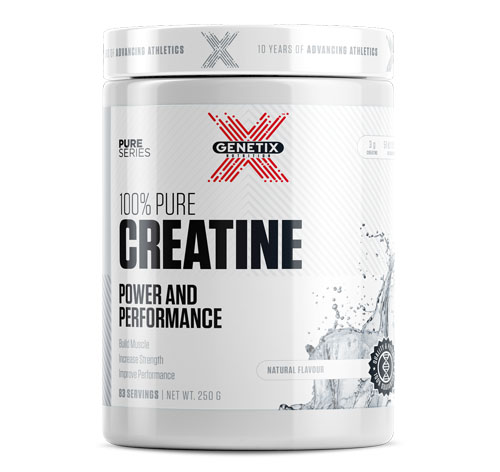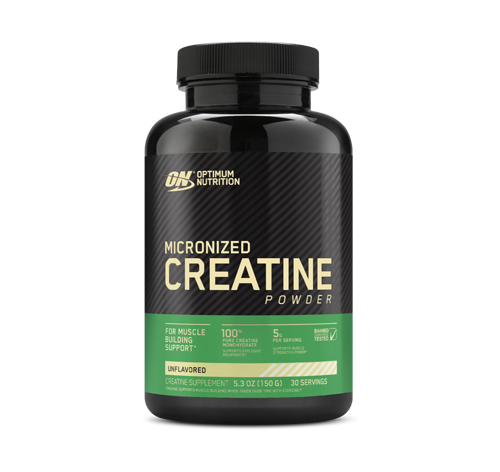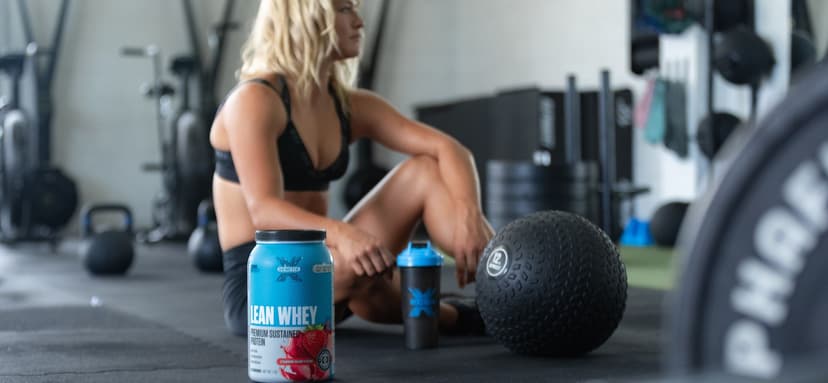What Does Creatine Do?
02
Dec
What Does Creatine Do?
Reading time - 8 mins
Creatine is a naturally occurring nitrogenous acid found within the body, which is synthesised using the two amino acids Arginine and Glycine. Due to its nitrogenous characteristics, Creatine is referred to as an energy-providing source to the cells it is associated with, and is primarily responsible for the fast production of ATP in response to maximum intensity, short-duration exercise.
Read: Improve Your Results with Creatine Blog
Adenosine Triphosphate (ATP) is the major energy source used in the body for all cellular functions, including the production and use of energy in response to muscular contraction. During maximum intensity short-duration exercise, such as weightlifting, sprinting or jumping, the body solely relies on an energy system known as the ATP-CP system, which refers to the ATP-Creatine Phosphate system.
The ATP-CP energy system is a non-oxygen-requiring system known for its speed of energy breakdown and production but can only maintain its performance to its full capacity for up to 10 seconds at maximum intensity. In this system, there is zero requirement for oxygen use and is solely reliant on the stored capacity of Creatine Phosphate from within the muscle, which is broken down and then converted into ATP as this is the primary usable energy source for the body.
By supplementing with a Creatine supplement, the body has the ability to increase its stores of Phosphocreatine within the muscle, resulting in an increase in ATP availability and has been shown to benefit the user by:
- Increasing strength
- Increasing power
- Increasing body weight (due to osmotic hydration)
- Increasing anaerobic performance
- Increasing muscular cross-sectional area (due to osmotic hydration)
In essence, by supplementing with a Creatine supplement, your body has an increased fuselage of high-octane fuel, resulting in more power and greater strength, and you will have the ability to work harder, faster and more effectively during maximum-intensity exercise.
Creatine is naturally occurring in food sources such as meat, dairy, eggs and fish.
However, the available amount of usable Creatine per serve is too small, and the proposed benefits of supplemented Creatine do not translate when compared to someone solely relying on food-derived sources for their Creatine intake.
According to the latest research, in a meta-analysis of 96 published studies (Branch, 2003), the most consistent dosage used for Creatine was between 3g and 5g a day, with varying opinions on whether to load (increased acute consumption) or not, of which the end result in performance markers appear to be the same irrespective of the method of consumption, provided the daily consumption was 3g to 5g taken consistently for the entire studies length.
If you would like to maximise your Creatine absorption, consuming it alongside an insulinogenic food source or supplement will ensure optimal bioavailability. However, it is by no means a necessity. Should you wish to optimise your Creatine absorption, the primary insulinogenic sources that this can be achieved via is the consumption of a high-quality protein source such as Whey Protein, a BCAA product or a carbohydrate source such as maltodextrin.
Throughout the scientific literature, there are currently no contraindications for Creatine use in all populations. However, for minority populations such as adolescents, individuals with organ-related health concerns or anyone using prescription medication, it is advised to seek professional guidance prior to introducing it into your supplement regime.
Our Pick:
Final Notes
Creatine is an accumulative supplement, meaning it requires dose consistency and must be taken regularly for it to be maximally beneficial. Stick with 5g a day taken with any food or supplement source as mentioned above and you can expect to notice performance enhancement within 2 weeks. Some research suggests a break from Creatine supplementation is a smart idea every 4-8 weeks, whereas some believe it can be taken indefinitely, so the choice is up to you on that front.
I suggest dosing your Creatine daily upon waking with breakfast so it is never forgotten and personally would use Creatine during my major training mesocycle of training for hypertrophy or strength and tend to remove it during a de-load week and the 2-3 weeks following as I am able to get strength gains in the initial stages of a new training cycle quite easily without creatine.
Finally, creatine is beneficial for both men and women, with women traditionally responding the best. Contrary to popular belief, Creatine will not cause a 'bloated' look or make you hold more subcutaneous water, as this is simply a myth perpetuated through Chinese whispers. Creatine will, however, increase intramuscular hydration. However, this can not be seen directly and will generally actually make the physique look better, not worse.
Creatine is a great supplement for all athletes, gym goers or anyone just looking for performance enhancement and is currently one of the most abundantly researched performance products on the market.
Reference:
Branch. J.D. “Effect of Creatine Supplementation on Body Composition and Performance: A Meta-analysis” International Journal of Sports Nutrition and Exercise Metabolism. 13. (2003):198-226
More Fit Talk

Categories
Protein
Sports Nutrition
More Categories
Health & Vitamins
Pickup & Delivery
FIND A STORE
SIGN IN

Free to Join - Cash back rewards on every purchase you make - Learn more















